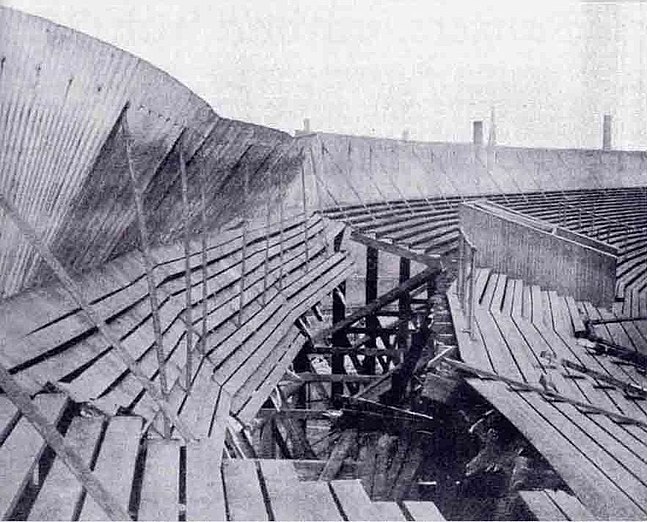At the turn of the century Rangers were the coming force in Scottish football. They had won the Scottish Cup in 1894, 1897 and 1898, with league titles in 1891, 1899, 1900 and 1902. With such success on the field it was necessary for the club to have a stadium fit to house the team. In 1899 therefore, the club built Ibrox Park, a stadium made of wooden terracing supported by a steel frame and which could hold 60,000 spectators.
On 5 April 1902, England faced Scotland as part of the annual Home Championship, with a capacity crowd straining to see their idols face the auld enemy. Scotland and England had between them won every Home Championship contested, and the game was set to be the decider for the 1901-2 edition. Going in to the game Scotland had already defeated Wales and Ireland, while England had beaten Ireland and drawn with Wales.
 |
| Alex Raisbeck |
The Scots had good reason to be confident. In Alex Raisbeck they had arguably the finest defender in the world at the time. Bob McColl was a supreme forward with an outstanding combination of pace and work ethic who also possessed a thunderous low shot that goalkeepers could rarely save. Bobby Walker was regarded by many as the leading forward of his time, and was certainly among the greatest that Scotland ever produced.
Shortly after the game got under way Scotland’s outside-left Bobby Templeton picked up the ball. His dribbling skill was well known and with the charged atmosphere the home crowd willed him to take on his marker. As he burst down the line the crowd strained to get a better view in hope of an early goal.
As Templeton surged forward, the crowd’s weight put such pressure on the wooden joints supporting the terracing that they gave way. A section of the West Tribune stand gave way with 25 fans falling to their death. With the combination of the collapse and a stampede to get away from the collapsed section over 500 spectators suffered injuries from the accident.
 |
| The Aftermath |
Despite the disaster the game went on. It was decided by organisers that it would be better to continue to avoid supporters leaving en masse or provoking a riot (there had been some disturbances prior to the game kicking off). The match ended 1-1, with Alexander Brown giving the home side the lead after a fine run from Templeton, while England equalised shortly before half-time via Jimmy Settle
The result though was declared void and a replay was required. This was held at Villa Park in Birmingham with all proceeds going to the disaster fund. The game though had a profound effect on stadia within Britain with a natural suspicion of wooden terracing becoming widespread. Rangers replacing the wooden terracing at Ibrox with a combination of earth and concrete and reduced the capacity of the ground. Ibrox was gradually improved over time, until in the 1920s it was completely redeveloped by Archibald Leith, the greatest designer of stadia in British history.
In 1971 Ibrox would again be the scene for a terrible football disaster. At an Old Firm game Celtic took a lead in the 89th minute prompting some Rangers supporters to leave the ground. Rangers equalised in the dying seconds of the game. In the crush of bodies 66 spectators lost their lives with further hundreds injured in the panic. It would not be the last great stadium tragedy in British football.

No comments:
Post a Comment